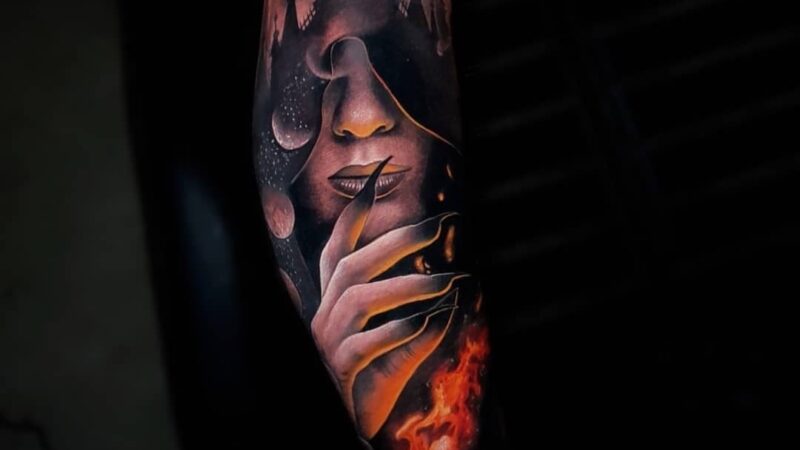Tears of the Kingdom Vulkan or Opengl : Best Guide

In the realm of computer graphics, the evolution of Tears of the Kingdom Vulkan or Opengl has been a captivating journey, leading to the creation of stunningly realistic and immersive visual experiences. Two prominent contenders in this realm are Tears of the Kingdom Vulkan or Opengl, both of which have played vital roles in shaping the modern gaming and graphics industry. The choice between these two APIs (Application Programming Interfaces) has sparked debates, discussions, and exploration into their strengths, weaknesses, and the unique tears they’ve shed on the kingdom of computer graphics.
OpenGL: The Pillar of Graphics
OpenGL, short for Open Graphics Library, emerged as a trailblazer in the world of computer graphics. Born in the early 1990s, it has withstood the test of time, serving as a fundamental API for rendering 2D and 3D graphics across a myriad of platforms. Its contribution to shaping the gaming industry and visual computing cannot be overstated.
One of OpenGL’s primary advantages is its cross-platform compatibility. Developers can create applications that run on various operating systems, from Windows and macOS to Linux. This adaptability makes OpenGL a go-to choice for projects where multi-platform support is crucial.
However, as technology evolved, OpenGL’s limitations became apparent. Its architecture, although reliable, proved to be increasingly inefficient for modern hardware. The “tears” of OpenGL could be seen in its performance bottlenecks and the difficulty in leveraging the full potential of contemporary GPUs. This realization led to the quest for a more advanced and efficient alternative.
Read More : Monrepscn ~ Diablo 4 Error Code 7 ~ Warzone 2 DirectX Errors ~ Dev Error 11642
Vulkan: Forging a New Path
Vulkan, introduced by the Khronos Group in 2015, was a response to the need for a more efficient and powerful graphics API. Designed from the ground up with modern hardware in mind, Vulkan aimed to provide developers with more direct control over the graphics pipeline. It presents a lower-level, explicit API that offers unprecedented access to the underlying hardware, allowing for fine-tuned optimizations and reduced CPU overhead.
The tears of OpenGL led to the birth of Vulkan, which represents a new era of graphics programming. Its multi-threading capabilities enable more efficient utilization of CPU cores, resulting in better performance and reduced stuttering. Vulkan also significantly diminishes driver overhead by allowing developers to manage memory and resources more directly. This has a profound impact on application stability and predictability, eliminating many of the unpredictability’s seen with OpenGL.
Nonetheless, Vulkan’s power comes with a price: complexity. Unlike OpenGL, which abstracts much of the underlying hardware complexity, Vulkan requires developers to handle numerous aspects themselves, such as memory management, synchronization, and explicit resource handling. This shift puts greater responsibility on the developers’ shoulders, often leading to a steeper learning curve.
Also Read : re4 remake fatal d3d error
Choosing Sides: Deciding Between Tears
The choice between Vulkan and OpenGL depends on a multitude of factors. Developers aiming to target a wide range of platforms might still opt for OpenGL due to its established cross-platform compatibility. Moreover, projects with relatively straightforward rendering needs may find OpenGL’s higher-level abstraction more convenient.
On the other hand, Vulkan is an ideal choice for those seeking to push the boundaries of graphics performance. This API empowers developers to harness the full potential of modern GPUs and multi-core processors, resulting in highly optimized applications with superior visual fidelity and responsiveness. Games that demand advanced graphical effects, such as real-time ray tracing or dynamic global illumination, can leverage Vulkan’s capabilities to achieve stunning visuals.
Click here : Tears of the Kingdom not Working Yuzu
Conclusion
The tears shed by OpenGL paved the way for Vulkan’s emergence, reflecting the ongoing evolution of graphics programming. Both APIs have their own merits and serve different purposes in the world of computer graphics. OpenGL’s legacy as a foundational graphics API remains significant, even as Vulkan redefines the possibilities of rendering technology.
As the kingdom of computer graphics continues to evolve, the choice between Vulkan and OpenGL will be dictated by the specific needs of the project, the developer’s familiarity with each API, and the desired balance between ease of development and cutting-edge performance. The journey from OpenGL’s inception to the rise of Vulkan is a testament to the enduring pursuit of excellence in the realm of visual computing—a journey characterized by innovation, exploration, and the tears of progress.
Frequently Asked Questions
1. What are Vulkan and OpenGL?
Vulkan and OpenGL are both graphics APIs used by developers to create and manage graphics rendering in applications, especially in video games. They provide a way for software to communicate with the hardware (usually GPUs) to generate visuals on screens.
2. What are the key differences between Vulkan and OpenGL?
Vulkan is a more modern and low-level API compared to OpenGL. It offers developers more control over hardware resources and parallelism, resulting in potentially better performance. OpenGL, on the other hand, is higher-level and more abstract, which makes it easier to work with but might not leverage modern hardware as efficiently as Vulkan.
3. Why was Vulkan developed?
Vulkan was developed as a response to the limitations of OpenGL, which had become less efficient at utilizing modern GPUs and multicore CPUs. Vulkan was designed to provide better performance by giving developers more direct access to hardware resources and allowing them to optimize their code.
4. Is Vulkan better than OpenGL?
Whether Vulkan is better than OpenGL depends on the context. Vulkan is generally more powerful and efficient for modern hardware, making it a better choice for high-performance applications. However, OpenGL might be preferred for projects that require broader platform compatibility or simpler graphics rendering.
5. Which one is more suitable for cross-platform development?
OpenGL has a long history of cross-platform compatibility, making it a good choice for projects that need to run on various operating systems. Vulkan, while gaining cross-platform support, may require more effort to ensure compatibility across different systems.
6. Is Vulkan harder to learn than OpenGL?
Yes, Vulkan is generally considered more difficult to learn than OpenGL. Its lower-level nature requires developers to handle more aspects of graphics rendering themselves, such as memory management and synchronization. OpenGL’s higher-level abstraction makes it easier for beginners to get started.
7. Can I use Vulkan on older hardware?
Vulkan’s main advantages shine on modern hardware. Older hardware might not fully support Vulkan’s features, and in such cases, OpenGL might be a more suitable choice for compatibility.
8. Can I switch from OpenGL to Vulkan in an existing project?
Switching from OpenGL to Vulkan can be a significant undertaking. It might require rewriting substantial parts of your rendering code to take advantage of Vulkan’s capabilities. The decision to switch depends on the benefits you expect to gain in terms of performance and features.
9. Are there any specific types of projects where one API is better than the other?
Vulkan is generally better for projects that demand high performance and advanced graphical effects, such as AAA games with complex rendering. OpenGL might be more suitable for smaller projects or those requiring broad platform support.
10. What’s the future of Vulkan and OpenGL?
Vulkan is positioned as the API of choice for future graphics programming due to its efficiency and performance advantages. However, OpenGL’s legacy and existing codebases will likely keep it relevant for some time, especially in projects that prioritize cross-platform compatibility.
11. Can Vulkan and OpenGL coexist in the same application?
Yes, it’s possible to use both Vulkan and OpenGL in the same application, although this might introduce some complexities. Some applications use OpenGL for UI rendering and Vulkan for more performance-critical graphics.
12. How do I choose between Vulkan and OpenGL for my project?
The choice depends on your project’s specific requirements. Consider factors like platform compatibility, performance goals, available development time, and the complexity of the rendering you need. If unsure, consulting with experienced graphics programmers can provide valuable insights.
13. Can I develop games using both APIs and switch between them based on hardware?
While theoretically possible, developing a game to support both APIs can be complex and time-consuming. It’s more common for developers to choose one API that best suits their target hardware and performance goals.
14. Are there any other modern graphics APIs apart from Vulkan and OpenGL?
Yes, DirectX 12 and DirectX 11 are other significant graphics APIs, mainly used on Windows platforms. Metal is another API used exclusively on Apple platforms. Each API has its strengths and is tailored to specific hardware and platforms.




